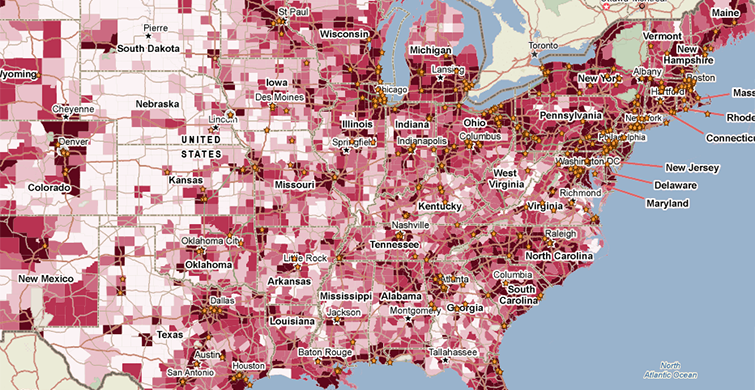Mapping Cultural Assets with the Museum Universe Data File


It may surprise you to hear that a single national list of museums is a very new concept. The Institute of Museum and Library Services is a federal agency that supports museums through grants and research, but as organizations museums aren’t officially tracked or regulated by IMLS in any way. Many museums are funded entirely from private sources, meaning they are totally off the radar of the federal government. To create the Museum Universe Data File in 2014, IMLS combined IRS 990 forms for certain nonprofit tax code categories with multiple third-party and proprietary sources including Foundation Center and Factual, an aggregator of crowd-sourced data. In other words, IMLS combined readily available public and private data to create a “universe” of their constituents — and to top that off, has shared it as an open dataset. Welcome to the future!
Large museums tend to be recognizable regional landmarks, many of them located in core urban areas. The following map shows that most large museums (having income of at least $10 million) are found in high-population counties:
One thing that surprised me while looking at the MUDF was the sheer number of smaller museums and cultural organizations present outside of large cities. I will definitely be using this dataset to plan my next road trip.

Some of these organizations may not register as museums – one reason for this is that we may not think of botanical gardens, historical societies, nature centers, and planetariums as museums. More importantly, IMLS took a broad-brush approach to defining a museum, so there are many “false-positives” in the dataset (I’m pretty sure the Cleveland Vegan Society doesn’t operate a museum out of the post office in my hometown). Even so, some museums may have been left out of the file.
The presence of a museum in a community can certainly be seen as an asset. But there are many types of museums, each with different missions and audiences. Currently there is no data-driven way to evaluate the positive impact of a museum. The MUDF was devised as an initial sampling frame for the Museums Count survey, the first national study of museums. Museums Count will lead the way for more nuanced indicators about cultural institutions. If you’d like to read more about the Museum Universe Data File, visit these resources at IMLS:
Museum Universe Data File Q & A
Webinar: 35,000 Museums: About the IMLS Estimate and Data File